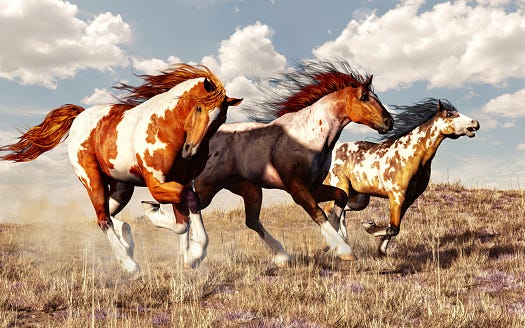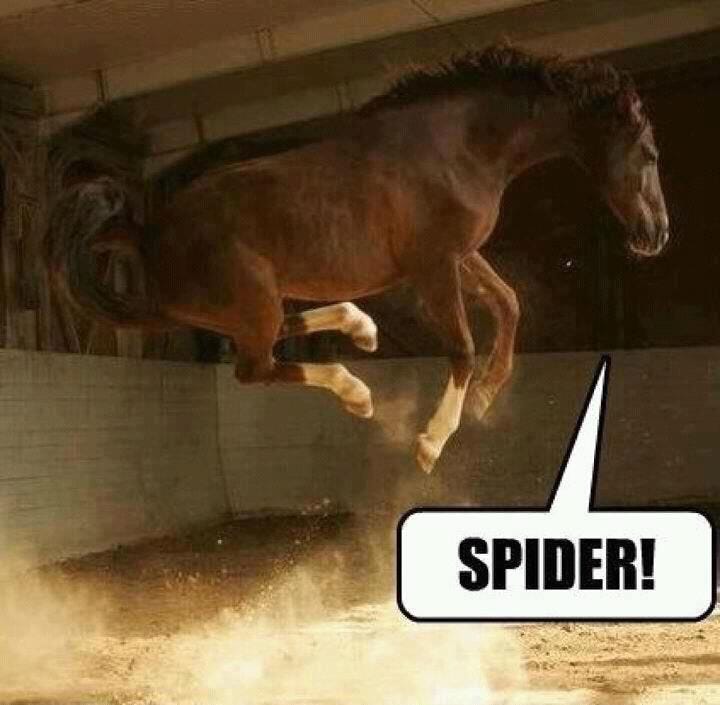“There is much we can learn from a friend who happens to be a horse.” from someone who should know - Aleksandra Layland.
My wife and I are still settling in a few years after moving from Upstate NY, to southeastern Wisconsin. We moved here to be close to our daughter with her two kids and our son, who are a two hour drive apart. We picked a nice lake town about half way between the two of them. All was going reasonably well until the worst pandemic in a hundred years struck, though viruses don’t actually strike. They just sneak in and covertly take over prized territory - but I digress.
Long story short, we went from having lots of dear friends we’d known for up to thirty years and all sorts of family nearby, to just having close family. It was a fair trade, but a wake up call for me. I’ve learned to appreciate friends while I have them. I’ve also lost a couple of close friends over the past few years - neither of which I’ll see until I fly over those “Pearly Gates”. Making new friends of all ages is of growing importance to me. Let me tell you about my newest friend.
I met “Buster” an eighteen year old Belgian draft horse, a few months ago. We both volunteer at S.M.I.L.E.S. (Special Methods in Learning Equine Skills). I’m realizing we have a lot in common and enjoy each other’s company - though we won’t be having a beer together anytime soon. We both have ancestors from Flanders though his have lived here for many generations, mine a mere three. We’re both retired and have put on a few extra pounds. He’s actually up to about 2100 pounds. Whereas he’s worked for fifteen years pulling plows and hay wagons for an Amish farmer in Michigan, I’ve spent close to thirty years helping nudge patients through their health issues across a handful of states and countries. He would be quick to admit that he hasn’t gotten out much - but that’s only in a figurative sense.
Animals and Earned Trust
Photo by Daniel Eskridge
Every animal, including we Homo sapiens, have a built in response to something new in our environment that suggests danger. We humans in a typical day to day existence, rarely get major surges of the catecholamines like adrenaline, which prepare us to fight or flee. Horses live closer to the edge and that’s something I’ve learned to respect. They are prey and we are predators until they learn otherwise. The horses that our disabled kids and adults ride are carefully selected and then further scrutinized to weed out potential loose cannons.
The largest threats we humans are likely to encounter in a twenty four hour period, are either angry - “needy” guys with a weapon, or cars which don’t understand the rules of separation. Horses have a unique and more deeply rooted loop reminding them ”wolves, coyotes, bears, and mountain lions really love horse meat”. They’ve learned to beware of subtle movements or anything touching them that they haven’t seen, smelled or heard first. It will take countless generations before horses in the wild stop instinctively thinking of humans as potential predators.
Keeping all of that in mind, it’s understandable that even a well-trained horse might feel a bit nervous upon meeting a new stall visitor. Years ago I read that when the average person, for instance at a party, encounters a stranger, it takes about fifteen seconds to figure out whether they “like” them or not. This rapid gut reaction is based completely on whether or not they feel they can trust that stranger. My hunch is that the more unfamiliar qualities this stranger possesses, the greater the obstacles toward trusting them.
The first thing we do when we prepare a horse to ride is to put the halter on, so we can lead them out to the cross ties for grooming. They enjoy the TLC, getting the small rocks removed from their “frogs” (the central depressed area in their hooves) and to varying degrees the bonding. Buster’s first encounter with me trying to groom him went well until I tried to “lift” his back hooves. Just for clarity, a guy my size doesn’t lift a large horses hoof if they don’t want it lifted. But all the coaxing in the world wouldn’t get HIM to lift his foot. Front hooves were no problem and he wasn’t limping so I just saddled him up and we were off.
My first lesson as Buster’s leader went fairly well but he wasn’t keeping up with the other horses in the arena and seemed oblivious to the admittedly timid commands of his rider. That was odd since I had been cautioned that he tends to crowd the spaces of other horses - which can be anywhere from problematic to dangerous. The next couple weeks the grooming and lessons went about the same but I had resorted to “dragging” him along as he wasn’t obeying the riders commands or mine. I got to dread working with him.
The next week, with none of my input, my rider and I had been switched to a different horse. I had stopped by Buster’s stall and he looked fine. However after the lesson, one of the staff trainers informed me that a few days ago someone had noticed a sore on the top of his right hind hoof. A vet was summoned and he drained a cup of pus from an abscess. A month later Buster was back in action and a wonderful horse to work with, even if he does like to crowd his neighbors.
I’m now honored to call Buster my friend. He’s made me a better - horse handler and human.
Lessons Learned From One Fine Horse
There are almost always underlying reasons for bad behavior.
Don’t expect a horse to respond when they’re sleeping (they get much of their non-REM sleep standing up) hungry, or when there’s a new mare or gelding in town.
When we meet a new horse be patient - they may be as uncomfortable as we are. But be quick to cut them a break, they may have had a particularly rough life or be in the middle of a really bad day.
Don’t expect any horse to be at their best behavior when they’re F.O.S. and really just need to unload.






